12 Indoor Plant Hacks You Need to Start Doing Right Now
Updated: Feb. 15, 2024
Try these easy reader-tested and approved indoor plant hacks, then sit back and watch your houseplants grow and thrive.
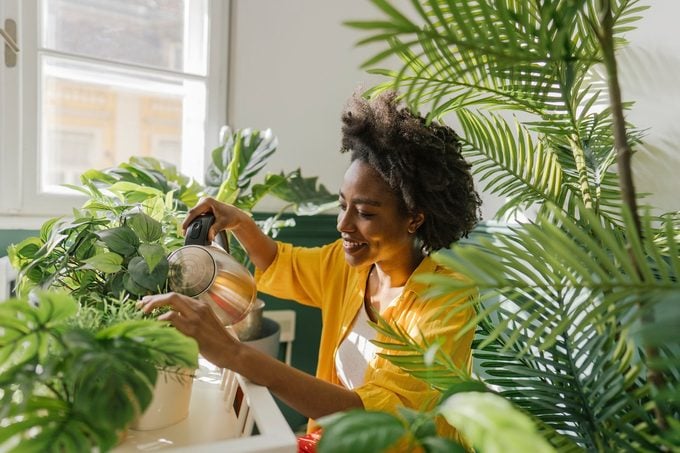
Being a houseplant parent has increased in popularity in recent years. According to civicscience.com, 66% percent of consumers in the U.S. own at least one houseplant. With so many people growing houseplants, there are always learnings and our readers shared their best plant hacks for indoor gardening.
On This Page
Use Ice Cubes to Water Houseplants
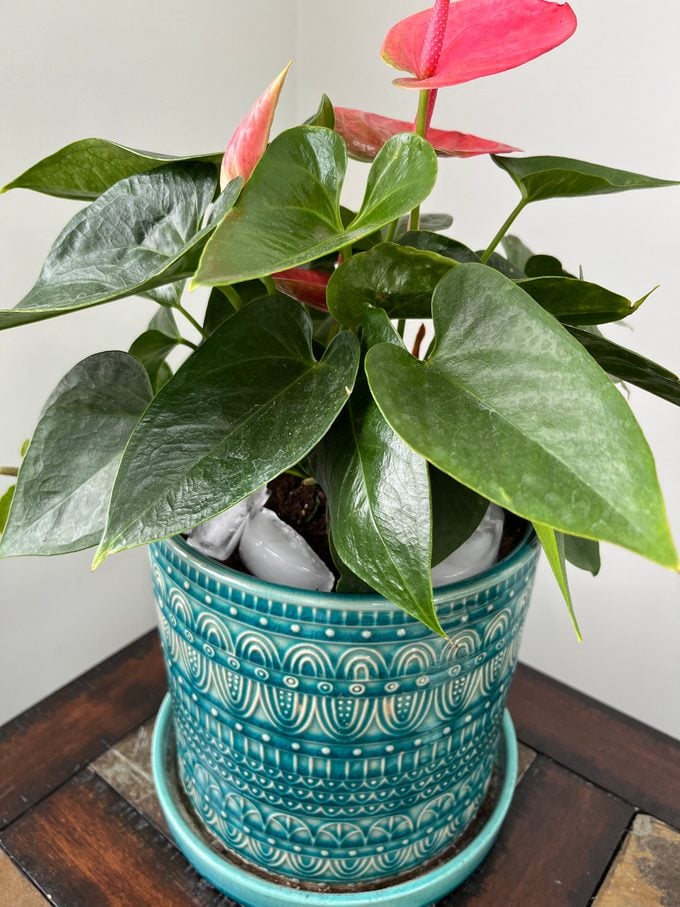
Proper watering is an essential step in knowing how to grow indoor plants. To help prevent a watery mess on the floor, one Birds & Blooms reader has a secret plant hack. “I put ice cubes in my hanging plants,” Roslyn Francis of Lodi, California, says. “As the ice melts, the soil absorbs the water and it doesn’t drip out the bottom of the pot.”
Reader Lisa Sherman of Carlsbad, California, also supports this watering method. “When my inside potted plants are dry, I put ice cubes on top of the soil to slowly melt and water the plant without flooding the pot,” she says. “It’s easy, there’s no mess, and I’m less likely to overwater this way.”
When is the best time to water plants?
Get Creative with Plant Placement
Some plants need full sun, some like full shade and some like a little of both. One hack that will give all of your plants what they need is to use furniture, such as long sofa tables and creatively place them in front of windows.
Reader Hope Cate of Wilmington, North Carolina explains. “I placed a long sofa table so that half of it is in front of a south-facing window,” she says. “Plants that prefer a lot of light are in the area in front of the window. But because the other half of the table is in the shade, I can have many plants in one spot, and they are all happy.”
These are the best houseplants for low light.
Find a Second Use for Your Coffee Grounds
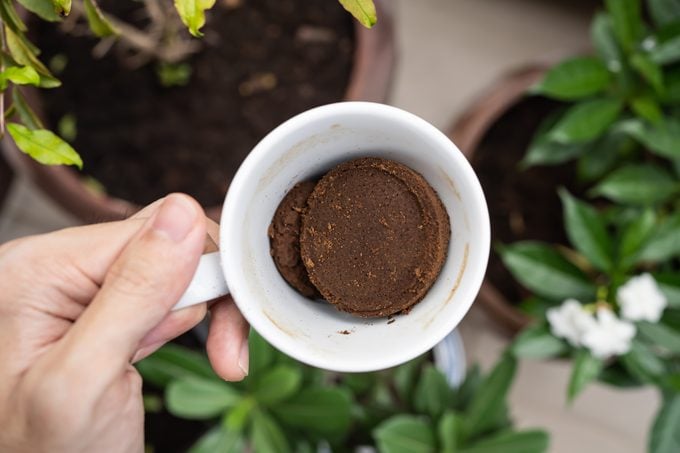
After the grounds from your daily cup of Joe have cooled, don’t toss them in the garbage. Reader Dolores Koland of Pelican Rapids, Minnesota, says, “Add coffee grounds to your houseplants and watch them thrive.”
Here are some ways you can use baking soda in your garden and landscape.
Invest in a Moisture Meter
Sometimes it’s tricky to gauge when a plant needs moisture. Instead of using your finger to gauge the moisture levels of your houseplants’ soil or just guessing that it’s time to water, you can use a moisture meter. Reader Tracy McCullum of Joliet, Illinois, says, “Use a soil moisture meter to prevent overwatering. It lets you know if the soil is wet, moist or dry.”
Can you reuse potting soil in planters?
Rotate Your Plants for Even Sun Exposure
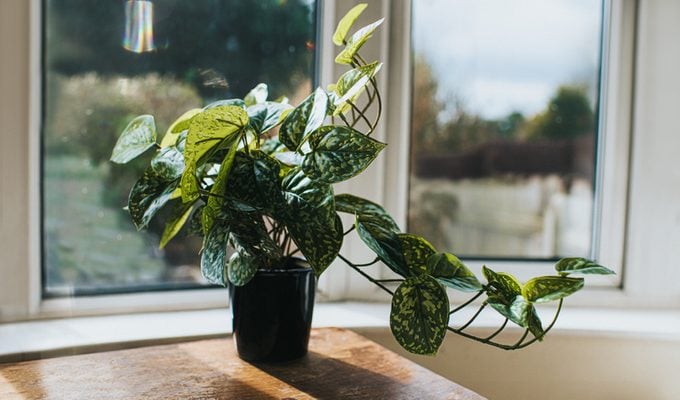
If you’ve noticed that your houseplants are leaning toward the light, try this super simple hack. To help maintain a symmetrical shape, rotate houseplants occasionally, maybe even every time you water if it helps you to remember.
Reader Judy Roberts of Graytown, Ohio, says, “Give the plants a quarter-turn once a week to even out their exposure to the sun. This will help your plant grow evenly.”
These 10 houseplants are best for beginners.
Give Plants Some Rainwater
Nothing beats a little fresh air and fresh water—and that’s true for your houseplants too. “If your pots are small enough to carry, put them out in a light rain when the weather is warm,” says reader Robbin Moller of Sylvania, Ohio. “I have yet to encounter a houseplant that doesn’t perk up with a little rain.”
Reader Sharon Woodworth of Georgetown, Kentucky, agrees. “Collect rainwater and use it on your houseplants. I’ve been doing it for years!” she says.
Before you buy your next houseplant, make sure it’s not on our list of houseplants you’ll regret.
Use The “10-10-10” Fertilizer Rule
Most houseplants do fine with a balanced fertilizer (10-10-10). Limit or stop fertilizing your indoor houseplants in winter and start feeding them again in spring. As always, follow the directions on your specific package.
Here’s why your indoor plant has yellow leaves.
Choose Small Houseplants for Small Spaces
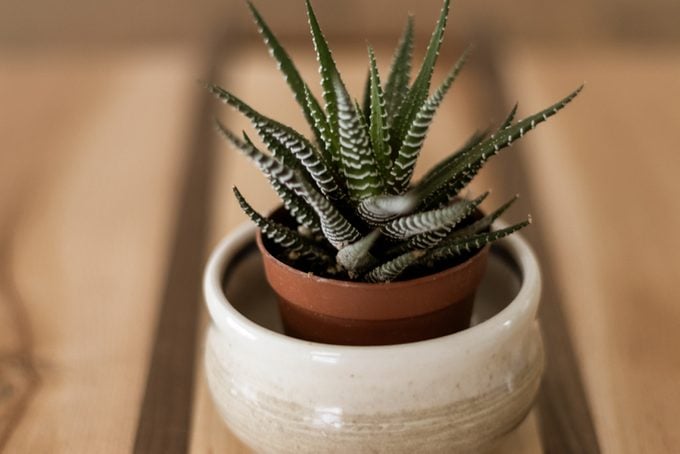
If you’re tight on space, most 3-inch pots fit on even the narrowest window sills. Peperomia and small cactuses and succulents can both happily grow in containers that size.
Use Artificial Grow Lights Right
When using artificial lights, the tips of the plants should be 6 to 12 inches from the light source to ensure the plant is receiving maximum benefits.
Boost Humidity for Tropical Plants
Ideal humidity for tropical houseplants is around 50%. If your home is drier, set your indoor plants on a gravel tray filled with water.
Kick Mildew to the Curb
“I read that sprinkling the dirt with cinnamon prevents powdery mildew, so I gave it a shot—it worked!” says reader Jeanine Buettner of Kalispell, Montana. She adds, “I no longer have a problem with the disease!”
Provide Extra Nutrients With Eggs
Reader Sandy Lewis of Akron, Ohio, waters her houseplants with water she has boiled eggs in. She says this one of our plant hacks, “works better for me than any commercial plant food!”
Next, discover more ways to use eggshells in the garden.
Additional reporting by Eva Monheim
Sources
- Birding and Gardening Secrets book, Birds & Blooms, 2011
- Civicscience.com
- University of Georgia Extension
- Portland Nursery
- University of Maryland Extension
- University of Florida Extension
- Iowa State University Extension
- University of Illinois Extension
Why Trust Us
For nearly 30 years, Birds & Blooms, a Trusted Media Brand, has been inspiring readers to have a lifelong love of birding, gardening and nature. We are the #1 bird and garden magazine in North America and a trusted online resource for over 15 million outdoor enthusiasts annually. Our library of thousands of informative articles and how-tos has been written by trusted journalists and fact-checked by bird and garden experts for accuracy. In addition to our staff of experienced gardeners and bird-watchers, we hire individuals who have years of education and hands-on experience with birding, bird feeding, gardening, butterflies, bugs and more. Learn more about Birds & Blooms, our field editor program, and our submission guidelines.





















